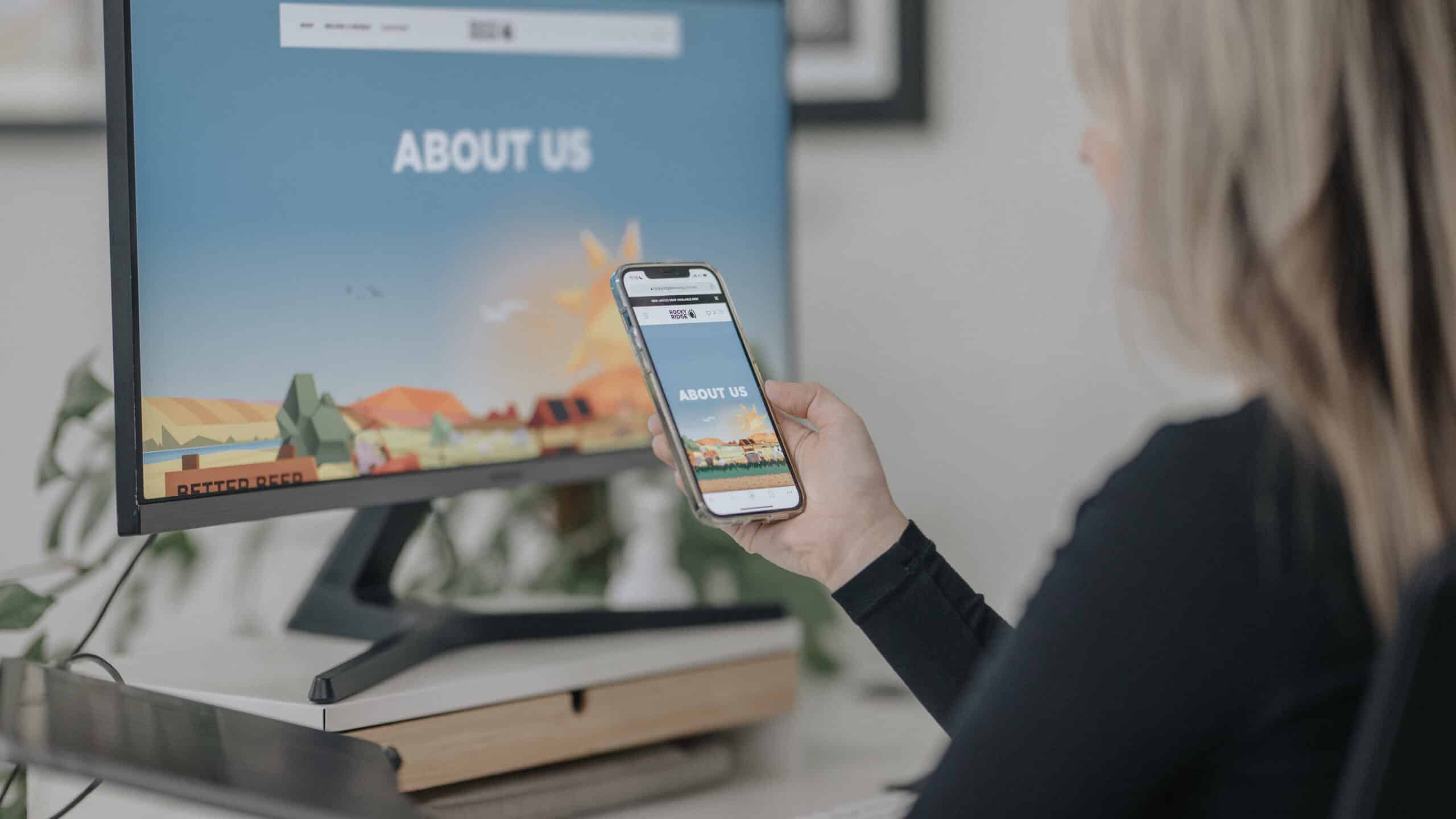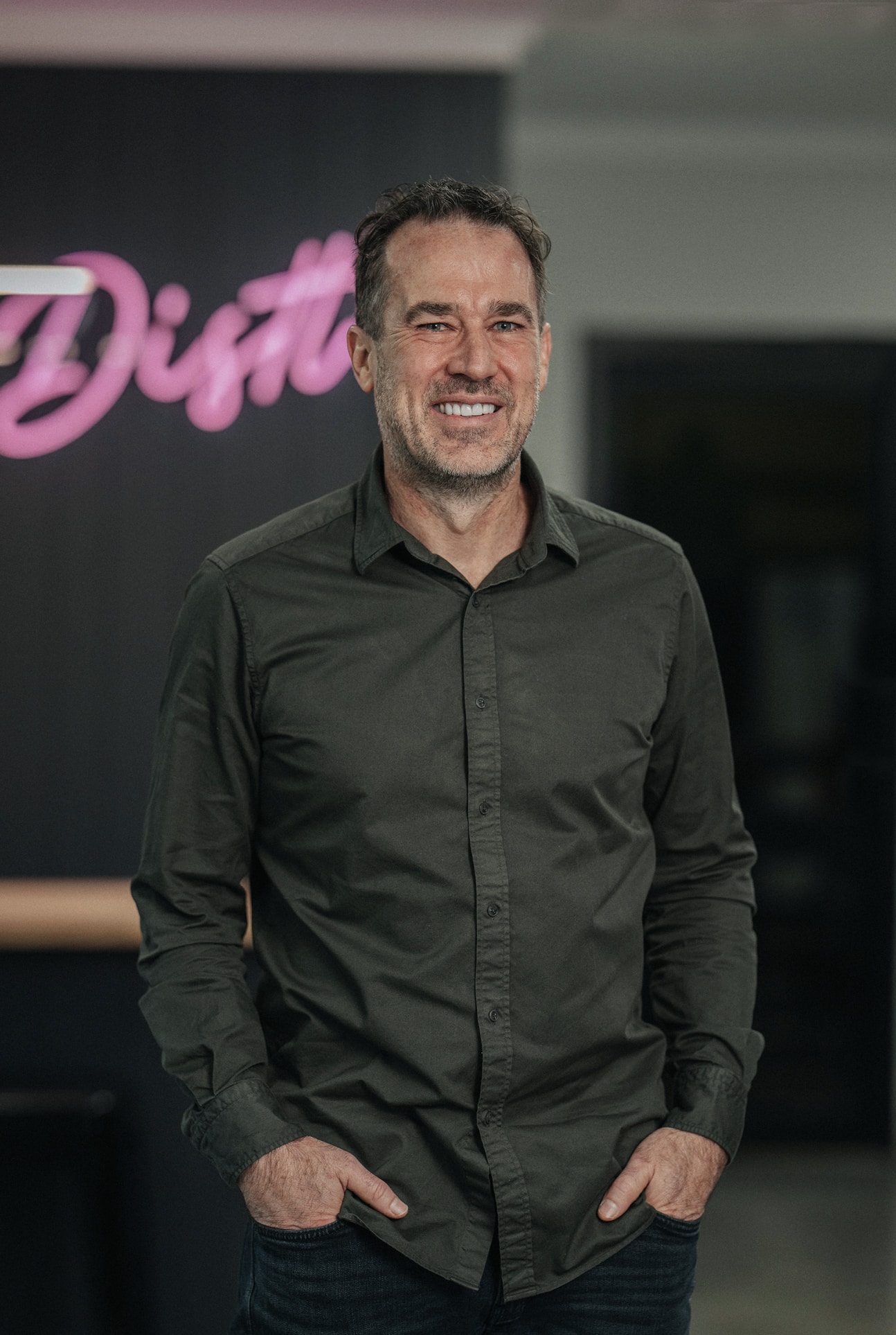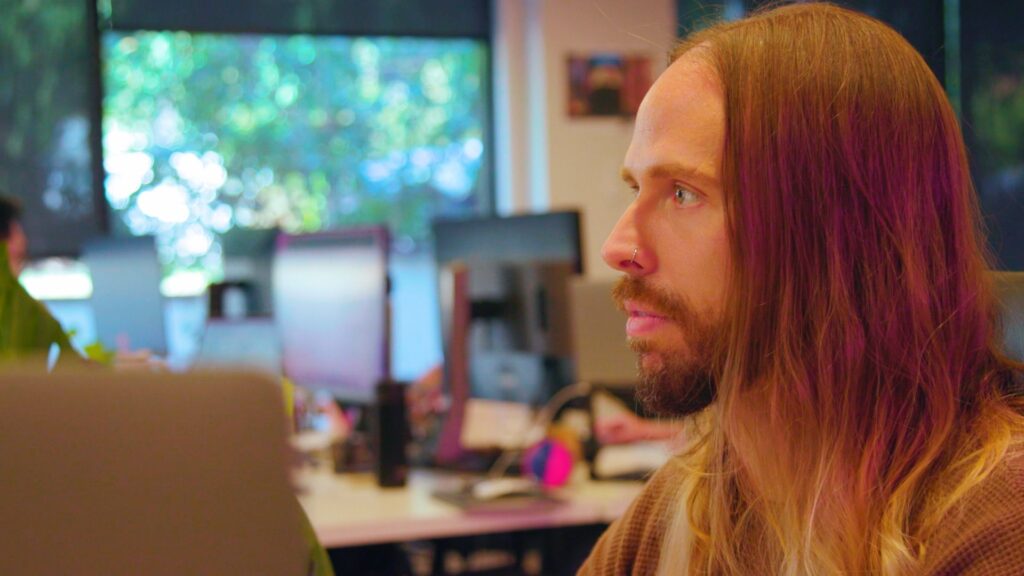The short answer, as always, is: it depends. Website costs in 2025 can range from virtually nothing other than your own time (using DIY tools) to tens of thousands of dollars for a fully custom site. Whether you opt for a basic web design refresh or a full custom website development with an experienced website agency, understanding the cost factors is key. In this guide, we’ll break down the factors influencing web design costs for Australian businesses and share up-to-date insights to help you plan your budget effectively.
Quick Overview – Website Cost Options (2025):
-
DIY Website Builders: Approximately $0 – $1,000. Upfront costs using platforms like Wix or Squarespace is the cheapest route. Monthly and yearly fees will come into play once launched. You’ll save money but face limitations in design flexibility, SEO, and scalability. A great option for a start-up with hours of available time lacking the ability to invest in a professional site.
-
Freelance/Offshore Web Designers: Roughly $1,000 – $10,000. Going with freelancers (or agencies that use freelancers) can be budget-friendly. However, this often means less strategic planning, no professional copywriting, and limited long-term support. This is the riskiest option as you lack the ownership, but you’re more financially invested.
-
Australian Web Design Agency: Typically $10,000+. This is where a website’s cost can vary dramatically. Hiring a local web design agency is a larger investment, but with the right partner you get a professionally built site tailored to your business with custom design, content, SEO optimisation, and ongoing support. A custom website can provide all the elements that your business needs to thrive, but you’ll pay according to the scope.
These figures are general guidelines – the actual website cost depends on your site’s complexity and your chosen path. Now, let’s dive into the detailed factors that drive these costs.
Key Factors Influencing Website Costs
In broad terms, website cost correlates with the size, complexity, and goals of the project. A simple five-page brochure site will cost far less than a complex e-commerce platform or custom web application. The amount of labour involved (planning, design, development, etc.), the level of expertise required, and any advanced features all contribute to the final price tag. It’s important to be aware that some providers might cut corners to offer very cheap websites, but those often lead to issues down the road. Choosing the cheapest option can mean spending more later to fix performance, security, or SEO problems.
At Distl, the core cost components of our website projects fall into five key areas:
-
Discovery and planning
-
SEO foundations and migration
-
Design
-
Development
-
UAT (User Acceptance Testing) and project management
Below, we explore each of these factors in detail. By understanding what’s involved in each phase, you’ll be better equipped to budget for your website and avoid any surprises.
Discovery and Planning
Every successful website project begins with thorough discovery and planning. This is the foundational phase where we connect with you to understand your business objectives and define what the website needs to achieve. Think of it as laying the groundwork or creating a blueprint for your site. This ensures that the site we build will meet your needs and align with current user expectations in your industry.
During an initial consultation, we’ll discuss questions such as:
-
What are your primary goals for the new website? (e.g. drive online sales, generate leads, showcase a portfolio)
-
Who is your target audience and what user experience do they expect?
-
What unique features or functionality do you have in mind? (e.g. booking system, membership portal, integrations with other tools)
-
Are there competitor or inspiration websites you like? (This helps us gauge design style and needed features to outshine competitors.)
-
How do you see the website evolving in the future? (Planning for scalability can save costs later.)
From these discussions, we develop a detailed project brief. This document outlines the site structure, required pages, key functionalities, and content needs. It also helps establish the project scope and align it with your budget. By having a clear plan, we reduce the risk of mid-project surprises that could increase costs. In other words, discovery and planning ensure we’re all on the same page about what the website will include and how it will support your business goals.
Pro tip: In this phase, be as open as possible about your budget range and must-haves. A good website agency will suggest solutions that fit your budget (perhaps recommending a phased approach or prioritising features) rather than pushing you into unnecessary expenses. We’ll also advise if any ideas might significantly impact the cost, so you can make informed decisions early.
SEO Foundations and Migration
A beautiful website means little if no one can find or use it effectively. That’s why building a strong foundation for Search Engine Optimisation (SEO) is a critical part of website development. In the absence of SEO, even an excellent site may languish in the depths of Google’s results. At Distl, we include core SEO work in every website project by default, it’s not an add-on, but a standard practice to ensure your new site can be discovered by your customers.
Here’s what our SEO foundation phase typically involves:
-
Strategic Sitemap & Site Structure: We create a logical sitemap (the blueprint of all your pages) based on keyword research. This means structuring the site around terms your potential customers are actively searching for, helping your site rank for those queries.
-
Content Planning & Optimisation: We identify target keywords for each page and craft or advise on content that naturally incorporates those terms. Every page gets optimised headings and copy so Google understands its relevance. High-quality, informative content also aligns with Google’s helpful content guidelines – your site should demonstrate expertise and genuinely answer users’ questions.
-
On-Page SEO Elements: Behind the scenes, we optimise meta tags (titles and descriptions), URL slugs, image alt text, and internal linking. These on-page tweaks can significantly boost visibility for relevant searches. We also ensure the site uses proper heading hierarchies and schema markup where appropriate, which can improve how your listing appears (and attracts clicks) in search results.
-
Technical SEO & Performance: We make sure your website is mobile-responsive and loads blazingly fast, important not just for user experience but also for showing up in Google rankings and AI overviews. Our developers implement clean, efficient code and performance best practices (optimising images, enabling caching, etc.) to meet Core Web Vitals standards. We also set up XML sitemaps, ensure SSL security (HTTPS), and fix any broken links or crawl issues. All these steps help search engines crawl and index your site effectively.
- Migration: Although this occurs just before launch, it will involve the SEO team. SEO migration is the process of transferring a website’s search engine rankings, authority, and indexing signals to a new location, structure, or platform while minimising disruption to its search engine visibility and organic traffic. It’s the careful and intentional handover from one location to another, when done right it ensures the new site is adopted and if rushed (or missed) can be disastrous for your digital presence and built up website authority.
By investing time in SEO foundations during development, you save money in the long run. Your site is launch-ready for Google, meaning you won’t need a costly retrofit of SEO basics later. Whether or not you plan an aggressive SEO or digital marketing campaign immediately, building a search-friendly site from day one is simply smart business. It increases the chance that your beautiful new website will actually attract visitors, and the right ones at that.
Design
The design phase is often the most exciting part of a web project, it’s when ideas start to become real. In this stage, we transform the concepts from discovery into tangible web design mockups and prototypes. Great design isn’t just about making a site “pretty”; it’s about creating an intuitive, on-brand user experience that guides visitors toward your desired actions.
The cost and timeframe of the design phase can vary widely depending on your approach:
-
Template or Modular Design: If budget is a primary concern, using a pre-designed template or a modular design system can contain costs. With this route, we follow predefined layouts and simply customise colours, fonts, and imagery to match your brand. It’s faster and generally cheaper, but comes with some limitations in uniqueness and flexibility.
-
Custom Design: A fully custom design means crafting layouts and graphics from scratch to perfectly fit your vision. This approach involves more creative work and revision cycles, and thus costs more, but the result is a one-of-a-kind website tailored to your business. In 2025, AI builders have become more prominent so making any website is easy and fast, many businesses find custom design worth the investment to stand out from cookie-cutter sites. It can incorporate bespoke elements like illustrations, animations, or interactive features that truly engage users.
During design, our design team works closely with you, starting with wireframes or concept sketches and then refining into high-fidelity mockups. We focus on UX/UI best practices: ensuring the navigation is easy to use, calls-to-action (CTA) are prominent, and the overall look aligns with your brand identity. Expect a lot of collaboration in this phase, we encourage feedback and make revisions so the final design not only looks beautiful but also “feels right” for your brand and audience.
Keep in mind that design choices can influence cost. For example, any complex layout or custom interactive animations will require more design and development hours than a straightforward, minimalist layout. We’ll guide you on finding the balance between visual impact and budget. You can definitely get lost in the visuals here, sometimes, simple and clean designs not only cost less but also provide a better user experience. Consider your users, industry and visitor expectations before making any decisions here. Our philosophy is that a website shouldn’t just look good, it must also work well for your business and customers.
Development
Once the design is approved, we move into the most labor-intensive phase: development. This is where our developers turn static designs into a functional, dynamic website through coding. In this stage, all the behind-the-scenes work happens to ensure your site does what it’s supposed to do, and does it reliably.
Key aspects of the development phase include:
-
Front-End Development: Our developers build out the visuals of the site using HTML, CSS, and JavaScript (or modern frameworks as needed). They ensure the site looks and behaves correctly across different browsers and devices. Every button, form, animation, and responsive layout is implemented according to the design specs.
-
Back-End Development: If your site requires custom features or integrations (for example, a product database, user accounts, or an API connection), we handle that on the back end. This could involve setting up a content management system (CMS) like WordPress or developing custom code to achieve the desired functionality. The more complex the functionality, the more development time is needed, which increases cost. For instance, building a simple informational website is much quicker than building a full e-commerce system with inventory management and payment processing.
-
Quality Assurance Testing: Developers also perform initial testing during development. They’ll verify that features are working, links aren’t broken, and that the site meets the specifications from the plan. Performance optimisation is addressed here as well – for example, we fine-tune code and leverage tools or plugins to ensure pages load fast and run smoothly. Any issues discovered are fixed during this phase.
Development is typically the longest phase of a project because it’s the engineering that makes the site come alive. This is also where using experienced developers pays off: skilled developers write efficient code that not only performs well (fast load times, fewer bugs) but is also easier to maintain and extend in the future. At Distl, our web development approach emphasises clean code and scalability, so your website can grow with your business.
It’s worth noting that changes late in this phase can be costly. A major scope change (like adding new features that weren’t in the original plan) might require significant rework. That’s why the earlier discovery and planning stage is so critical. However, we know things evolve, a good development team will remain flexible and advise you on the cost–benefit of any mid-project additions. We’ll always communicate the impact on timeline and budget if you request changes during development.
UAT And Project Management
Building a website isn’t just about design and code, coordination and quality control are equally important. Project management ensures that all the moving parts of the project come together on time and within budget, while testing (UAT – User Acceptance Testing) ensures the final product is polished and reliable.
Even though project management and testing might constitute a smaller percentage of the overall project hours, their significance cannot be overstated. A dedicated project manager acts as the compass guiding the project from inception to launch, and will be your point of contact until launch (and the support window post-launch). This person manages timelines, allocates resources (designers, developers, content creators, etc.), and keeps communication flowing. In essence, they make sure everyone is on the same page throughout the project. Good project management can prevent costly miscommunications or delays (for example, catching a misunderstood requirement early, or adjusting the schedule when unexpected challenges arise).
User Acceptance Testing (UAT) is the phase where we, and you, rigorously test the website before it goes live. Our team systematically checks the site on various browsers (Chrome, Safari, Firefox, etc.) and devices (desktop, tablet, mobile) to ensure everything works and looks as intended. We click every button, submit every form, and verify that interactive elements function properly. This is also when any final bugs are identified and squashed. We pay attention to details like: Do all images load correctly? Are there typos or content errors? Is the site layout breaking on smaller screens? Thorough testing takes time and resources, but it is absolutely worth it. The last thing you want is to launch a site only to find broken pages or frustrated users.
In 2025, user expectations are high, people won’t tolerate a buggy or confusing website. Investing in UAT and QA (quality assurance) ensures you launch with confidence. It’s far more expensive (and damaging to your brand) to fix major issues post-launch than to catch and fix them beforehand. We also involve clients in UAT by providing a staging site for you to review. Your feedback is crucial, it’s your chance to experience the site as if you were a user or customer and confirm it meets your expectations.
Throughout all these phases, our project manager is keeping everything aligned, adjusting timelines if needed, liaising with you about feedback, and making sure that when we hit the launch date, there are no loose ends. While project management and testing don’t produce “visible” design or features, they are key factors in a successful website build and thus part of what you’re paying for in a professional website package.
Additional Factors to Consider
Beyond the five core phases above, there are a few additional factors that can influence how much your website will cost. These often fall outside the main development scope but are important to plan for:
Content Creation and Migration
A successful website isn’t just defined by its code and visuals – the words and images on your site are equally critical. High-quality content (compelling copy, imagery, and possibly video) is what engages your visitors and communicates your brand message. When budgeting for a website, consider how your content will be created or sourced:
-
Copywriting: Will you write the website text yourself, or do you need a professional copywriter? Professional copy ensures your messaging is clear, persuasive, and SEO-friendly. It also maintains a consistent tone that reflects your brand. If you don’t have this expertise in-house, investing in a copywriter is wise (but adds to cost). Some agencies, including Distl, offer copywriting as an additional service, often quoted separately from the web development itself.
-
Imagery and Video: Striking visuals can elevate a website, but obtaining them can incur costs. Using existing assets (like photos you already have) is cost-effective, whereas commissioning a custom photoshoot or branded video is a larger expense. Stock photos or stock videos are a middle-ground option (typically low cost per image or via a subscription). In Australia, many businesses opt for a professional photoshoot to get authentic images, this ensures your site doesn’t look “stock,” but it should be budgeted for. (Tip: We have a published a guide on investing in photography and videography, check it out if you’re considering this step.)
If you have an existing website, content migration is another consideration. Moving text, images, and data from an old site to a new one can take significant time, especially if it’s not simply copy-paste (for instance, migrating blog articles, user accounts, or product catalogs into a new system). Sometimes this process can be semi-automated with scripts or plugins; other times it’s manual. We’ll evaluate this during planning, it might be a line item in your quote if the migration is complex.
All these content-related tasks impact cost. Some clients choose to handle content writing or gathering images on their own to save money, which is perfectly fine, just be sure you allocate the time for it. Others prefer a turnkey solution where the agency handles it all. At Distl, we have skilled copywriters and art directors on hand, so we can take content creation off your plate if needed. We provide a separate quote for extensive copywriting or photography work, treating it as distinct from the core website build. This keeps the website development quote transparent and allows you to choose which pieces you want to outsource versus do internally.
Integrations And Functionality
Modern websites often need to integrate with other tools and offer advanced functionality beyond basic pages. It’s important to be open to the potential of additional features that could benefit your site, but also to recognise that each added feature can increase complexity (and cost). In our initial meetings, we’ll ask about any specific integrations or functionalities you might need. However, it’s not unusual for new ideas or requirements to emerge mid-project as you think of new opportunities or as industry trends evolve.
A reputable web agency will help you evaluate these ideas by weighing their benefits against the impact on timeline and budget. We understand websites are somewhat fluid, and we’ll guide you in deciding which features are “must-haves” for launch and which could be phased in later if needed.
Some popular integrations and features that influence cost include:
-
E-commerce capabilities: If you plan to sell products or accept payments online, integrating an e-commerce platform (like Shopify, WooCommerce, or a custom cart) will add to development time. This includes setting up product pages, a shopping cart, checkout process, and connecting to payment gateways (e.g. PayPal, Stripe). E-commerce websites generally cost more than informational sites because of these requirements.
-
Booking or Scheduling Systems: For businesses that schedule appointments (clinics, consultants, gyms), embedding a booking system or calendar integration can be hugely valuable. We can integrate third-party booking software via APIs or plugins, but expect some extra configuration and testing.
-
CRM or Email Marketing Integration: Many businesses want their website to seamlessly feed leads into a CRM (like Salesforce, HubSpot) or email marketing platform (like Mailchimp). This involves forms that send data to those systems, or custom API work to make sure everything syncs. It’s very doable (and often worth it for marketing automation) but will be a line item in the project.
-
Social Media and Maps: Embedding social feeds or Google Maps is usually a minor cost, as plugins or APIs are available. But if you want something custom, say a social login feature (letting users log in with Facebook/Google), that requires more development work.
-
Advanced Web Applications: If your website needs to perform complex functions (for example, a custom quote calculator, an interactive data visualisation, or AI-powered chatbot), these will significantly increase development time. As an example trend in 2025, integrating AI chatbots or recommendation engines has become more common – but depending on complexity, such AI integration can add anywhere from ~$1,000 up to $10,000 to a project. We make sure to discuss any cutting-edge features like this so you understand the cost–benefit.
The key takeaway: every extra feature has a cost. That doesn’t mean you should avoid all extras, often the functionality is exactly what makes your site valuable to users (and to you). But it’s wise to prioritise what’s truly important for launch. We’ll help by providing cost estimates for each major feature so you can decide what fits your budget. Often, we implement core features first, then add nice-to-have enhancements in future phases or as part of ongoing improvements.
Ongoing Maintenance and Hosting
One aspect that’s sometimes overlooked in website budgeting is the ongoing cost of keeping your site up and running after launch. Building the website is largely a one-time cost, but running a website is not free. As part of planning your 2025 web or marketing budget, be sure to account for the following recurring expenses:
-
Domain Name: This is your website’s address (URL), usually ending in .com, .com.au, etc. Domains are inexpensive but require annual renewal. Budget roughly A$20 per year for a standard .com.au domain (prices can vary a bit, often in the A$10–$50/year range depending on the provider and domain type).
-
Web Hosting: Your website’s files and data need to live on a server. Hosting costs in Australia typically range from around A$20 up to $100+ per month for small-to-medium business sites, depending on the hosting type and performance you need. For example, a basic shared hosting plan might be on the lower end (even under $20/month), whereas a premium managed hosting or VPS (Virtual Private Server) with extra speed and support could be $50–$100/month or more. It’s worth investing in local web hosting, Google knows who you’re lumped in with and it directly affects your standing with search engines, and therefore your rankings, faster load times and reliable uptime help both user experience and SEO.
-
SSL Certificate: Fortunately, nowadays many hosts and services (like Let’s Encrypt) provide basic SSL security for free. This gives you the padlock and “https://” which is essential for user trust and SEO. If your host doesn’t include SSL or you need an advanced certificate (for e-commerce or extended validation), it could run anywhere from $0 to a few hundred dollars per year. Most small businesses will be fine with the free or low-cost SSL options.
-
Maintenance & Support: Websites require maintenance just like cars. Software platforms (like WordPress and its plugins) need regular updates to stay secure and functional. Content might need updating, backups should be taken, and occasional technical issues might need fixing. You can handle some of this yourself, but many businesses opt for a maintenance plan with their agency or a third-party. Maintenance plans can cover things like plugin updates, security monitoring, performance tuning, and a set amount of content changes or support hours. The cost for ongoing maintenance varies widely based on what’s included: it could be a few hundred dollars a year for basic hosting-plus-support, to several thousand a year for a comprehensive care plan.
When planning your website, think beyond launch. Budget for at least a year of operation, domain, hosting, and any maintenance or marketing services. It’s far better to budget upfront for these “hidden” costs than to be caught off guard. Remember, a website is not a set-and-forget asset; the most successful sites continue to grow and improve over time. Allocating resources for improvements (new pages, added features, fresh content, ongoing SEO, etc.) will help your site continue to deliver value. Investing in maintenance and updates will keep it secure, fast, and effective in achieving your business goals.
Looking For a Custom Website Proposal?
By now it’s clear that the question “How much does a website cost?” has no one-size-fits-all answer. The cost of web design depends on your requirements, but knowing the factors and current trends puts you in control. If you’re feeling a bit overwhelmed by the possibilities (DIY vs professional, which features to include, how to optimise for SEO from the start, etc.), don’t worry, that’s exactly where a conversation with a professional can help.
At Distl, our team comprises skilled website designers, developers, copywriters, and digital marketers, all under one roof. We’ve built websites for startups, local businesses, and enterprises across Australia, and we pride ourselves on delivering sites that not only look amazing but also drive results. As a Perth-based website agency, we understand the Australian market and what local customers expect online.
If you’re keen to get a more precise answer on your website project cost, feel free to get in touch with us. We’d love to hear about your ideas, objectives, and challenges. With that information, we can put together a tailored proposal and quote that breaks down the recommended approach and associated costs. Whether you need a ballpark figure for budgeting or a detailed breakdown of a complex build, our team is happy to help.







